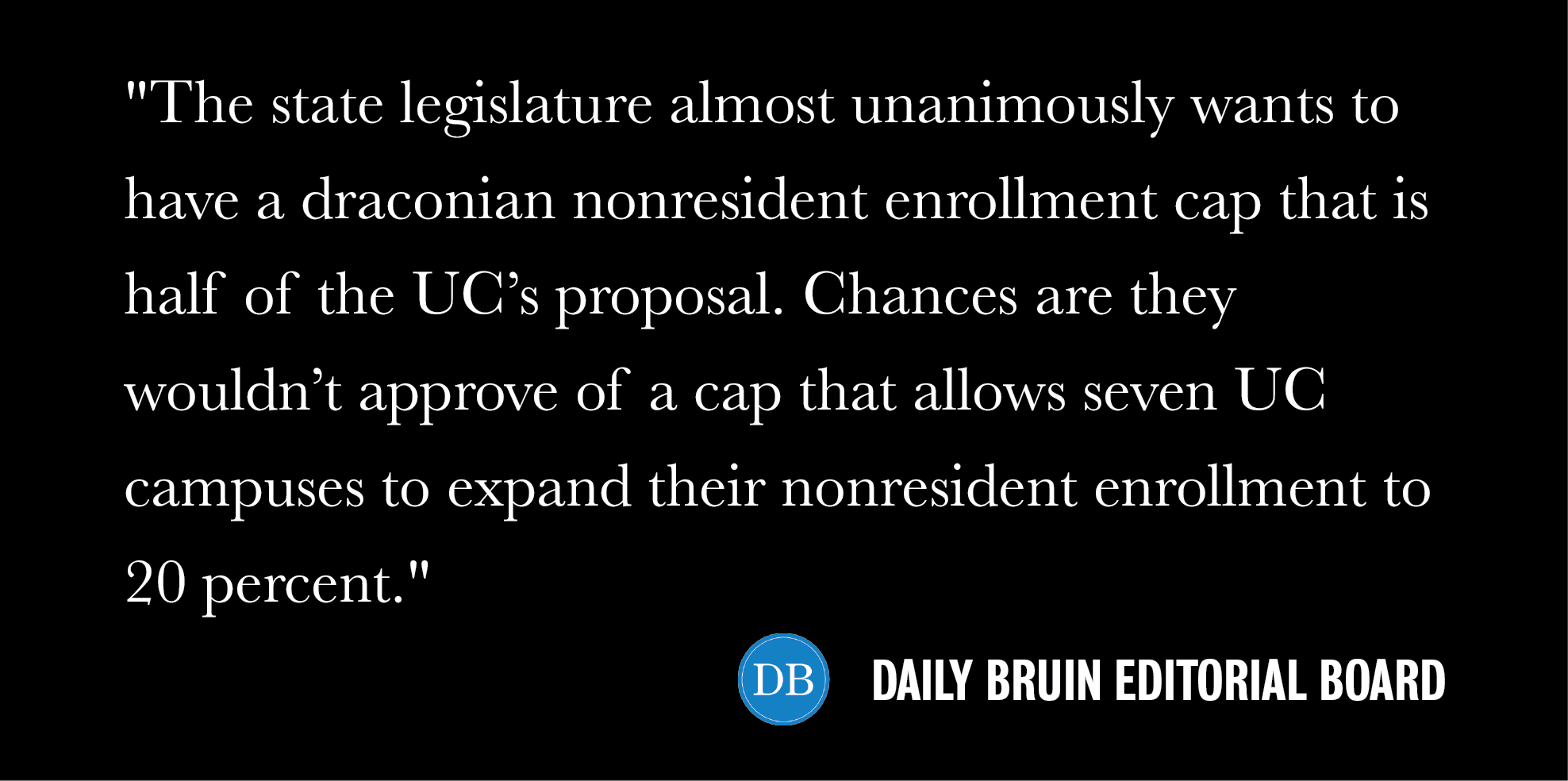Editorial: Proposed UC nonresident enrollment cap requires state legislature input

By Editorial Board
March 12, 2017 9:03 p.m.
Over the past few years, the California state Legislature has readily criticized and attempted to micromanage the University of California. But in the wake of the UC’s proposed nonresident enrollment cap, the state has gone silent – and at the worst possible time.
[Related: UC to vote on proposal to limit nonresident enrollment to 20 percent]
On March 6, UC President Janet Napolitano proposed a cap that would limit nonresident enrollment levels to their current proportions at UC Berkeley, UC San Diego and UCLA – 24.4, 22.9 and 22.8 percent, respectively – and to 20 percent at six other UC campuses.
The cap would affect out-of-state and international students while reserving more spots for California residents, satisfying a provision in the Budget Act of 2016 that would increase the UC’s appropriation by $18.5 million.
This cap, however, contains no input from the state, despite the government having the ultimate say on whether it is enough. Instead of engaging in an indirect back-and-forth, the UC and the state Legislature should enter into direct negotiations on what the nonresident enrollment limit should be, so as to agree on a cap they both find acceptable.
If the UC approves the cap at a regents’ meeting this week, the California Department of Finance will evaluate it and determine whether to release the sought-after $18.5 million. However, what happens there is anyone’s guess. The department’s deputy director for external affairs said it will withhold comment until the regents’ meeting – meaning the UC has no idea what the state thinks of its cap until it’s implemented.
And the indications aren’t encouraging. Assemblyman Kevin McCarty, chair of the Assembly Budget Subcommittee on Education Finance, characterized the cap as “close, but (falling) a little short”. In 2016, McCarty’s bill to cap nonresident enrollment at 10 percent passed the Assembly 78 to 2. Although it ultimately didn’t go through, the bill demonstrates that members of the legislature almost unanimously want to have a draconian nonresident enrollment cap that is half of the UC’s proposal. Chances are they wouldn’t approve of a cap that allows seven UC campuses to expand their nonresident enrollment to 20 percent.
At the same time, the UC’s proposal includes a clause that if the state funding per student declines, it can suspend the cap. But looking at past budget agreements, state funding per student has consistently decreased over the past decade. Moreover, a suspension would highlight the futility of having a cap when the state is barely providing enough funds to the UC.
The legislature is not ignorant of this, and given it controls the purse of the state, it can go ahead and implement stricter terms in future budgets, much like it almost did last year. But stricter terms on nonresident enrollment would hurt the already cash-strapped UC’s finances, leading either to a general tuition hike or a lower quality of education.
With the gap between the state and the UC this wide, it’s crucial the two communicate to decide what exactly the cap should be. This would avoid a situation where the UC has to guess what kind of cap is satisfactory and risk the state legislature imposing something even harsher in the next year’s budget.
As much as McCarty claims to understand that the UC raised nonresident enrollment in the first place due to limited resources, his concerns are meaningless when you look at how low the state funding already is. This can only be rectified by the state legislature and the UC communicating on exactly what each party wants.

